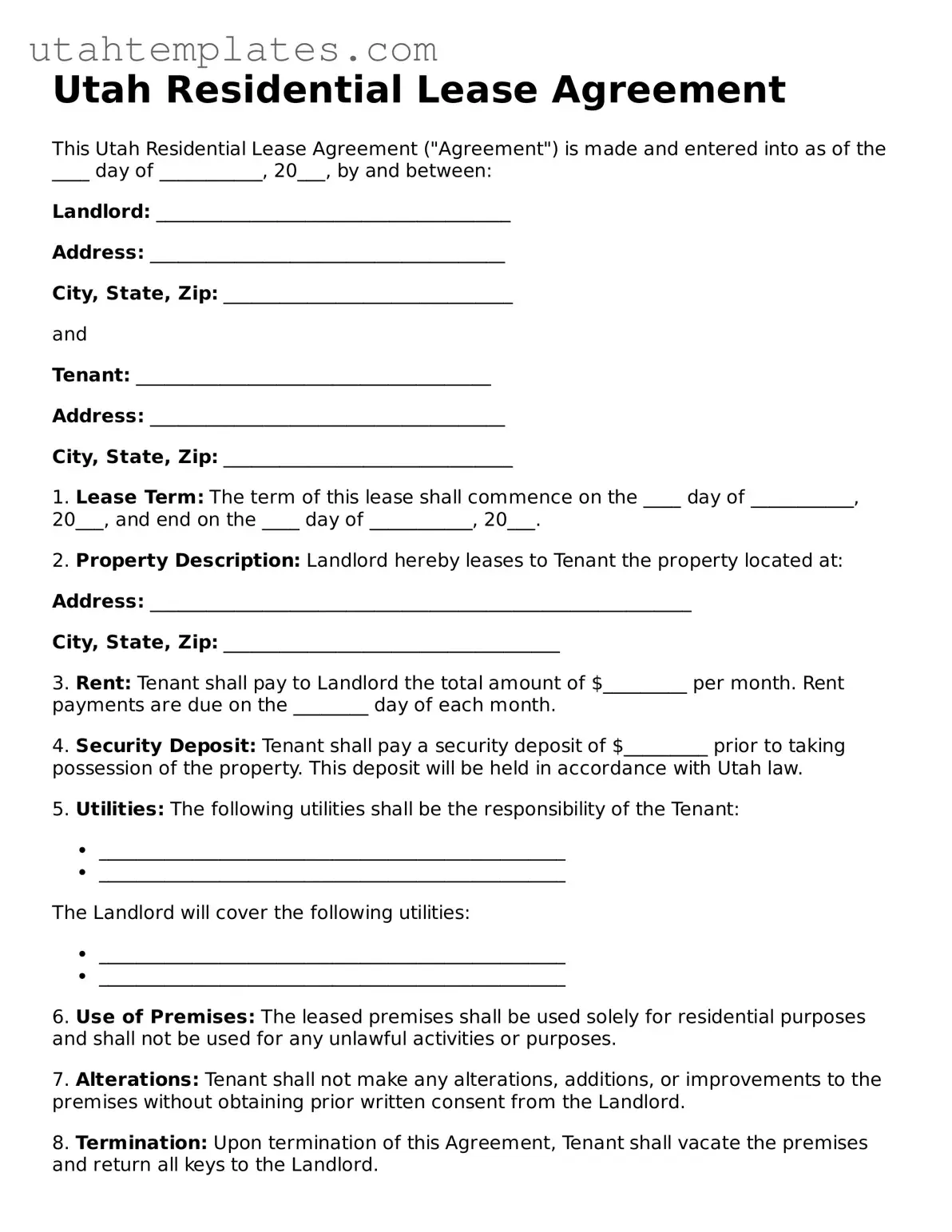Utah Residential Lease Agreement
This Utah Residential Lease Agreement ("Agreement") is made and entered into as of the ____ day of ___________, 20___, by and between:
Landlord: ______________________________________
Address: ______________________________________
City, State, Zip: _______________________________
and
Tenant: ______________________________________
Address: ______________________________________
City, State, Zip: _______________________________
1. Lease Term: The term of this lease shall commence on the ____ day of ___________, 20___, and end on the ____ day of ___________, 20___.
2. Property Description: Landlord hereby leases to Tenant the property located at:
Address: __________________________________________________________
City, State, Zip: ____________________________________
3. Rent: Tenant shall pay to Landlord the total amount of $_________ per month. Rent payments are due on the ________ day of each month.
4. Security Deposit: Tenant shall pay a security deposit of $_________ prior to taking possession of the property. This deposit will be held in accordance with Utah law.
5. Utilities: The following utilities shall be the responsibility of the Tenant:
- __________________________________________________
- __________________________________________________
The Landlord will cover the following utilities:
- __________________________________________________
- __________________________________________________
6. Use of Premises: The leased premises shall be used solely for residential purposes and shall not be used for any unlawful activities or purposes.
7. Alterations: Tenant shall not make any alterations, additions, or improvements to the premises without obtaining prior written consent from the Landlord.
8. Termination: Upon termination of this Agreement, Tenant shall vacate the premises and return all keys to the Landlord.
9. Governing Law: This Agreement shall be governed by the laws of the State of Utah.
10. Signatures: By signing below, both parties agree to the terms outlined in this Utah Residential Lease Agreement.
Landlord Signature: _______________________________ Date: ________________
Tenant Signature: ________________________________ Date: ________________
This Agreement constitutes the entire understanding between the parties with respect to the subject matter hereof and supersedes all prior negotiations, discussions, and agreements.
Landlord and Tenant acknowledge that they have read and understood this Agreement, and they each agree to abide by its terms.
